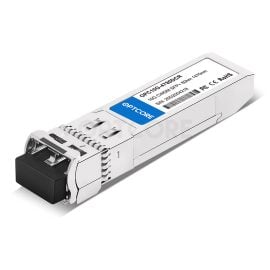Blog, Optical Networking
CWDM vs DWDM vs WDM: Differences & Similarities
Wavelength division multiplexing (WDM) technology is widely used in modern high-capacity fiber optic communication networks. The two most common types are Coarse Wavelength Division Multiplexing (CWDM) and Dense Wavelength Division Multiplexing (DWDM). Although both technologies function by multiplexing different wavelengths into a single fiber, significantly enhancing a fiber optic network’s bandwidth and data capacity, they have some essential differences worth exploring.
As a technical manager with many years of experience in the industry, I often receive inquiries from customers about how to distinguish between CWDM, DWDM, and WDM and how to select the most appropriate WDM network for their needs.
This article will dive into the fundamental differences between these technologies; now, let’s start.
What is WDM?
Wavelength Division Multiplexing (WDM) is an advanced technology used in fiber optic communications to increase the capacity of optical fibers. WDM multiplexes two or more optical signals of different wavelengths onto a single fiber network, where they are demultiplexed and split into distinct data streams at the receiver side, thus dramatically increasing the fiber bandwidth.
WDM combines optical signals into a single fiber by assigning each signal a unique wavelength. That makes efficient use of fiber bandwidth and effectively creates a “virtual fiber” where each wavelength operates independently.
Unlike conventional dual-fiber transmission modes, WDM allows more than two wavelengths to be transmitted on the same fiber, thus enabling the simultaneous transmission of different types of data streams. WDM saves fiber resources, maximizes fiber utilization, and helps optimize and protect network investments, providing operators and subscribers with the most significant ROI.
What is CWDM?
CWDM is the most common type of WDM technology. The letter “C” in the words stands for Corse, meaning it provides wide channel spacings but limited channel counts. CWDM uses wavelengths between 1270nm and 1610 nm with a 20nm channel spacing, supporting 18 channels. The channel spacing grid for CWDM is standardized by the International Telecommunication Union (ITU).

What is DWDM?
Like CWDM, DWDM combines multiple wavelengths onto a single-strand fiber to achieve the data transmission capacity over existing fiber networks. However, it uses much denser channel spacing to accommodate more channels. Based on different wavelength spacing (0.2nm, 0.4nm, 0.8nm), the DWDM channels can support 40, 80, or 160.
loud edge is often the preferred type of edge computing for enterprise applications due to its flexibility and scalability.
Further Reading
CWDM vs DWDM: What’s the Difference?
Although CWDM and DWDM are both WDM technologies for improved bandwidth density, they differ significantly. First, let’s see the overall comparison table below.
1. CWDM vs DWDM: Channel Spacing and Capacity
CWDM has a much wider channel spacing than DWDM. The CWDM system supports 18 channels with wavelengths from 1270nm to 1610nm, with a 20nm wavelength spacing. In most cases, CWDM only uses 1470nm to 1610nm wavelengths and reaches 8 channels of data streams.
Unlike CWDM, DWDM wavelengths usually use 1525nm to 1565nm (C band) and 1570nm to 1610nm (L band). That defines a 0.4nm (50GHz) or 0.8nm (100GHz) channel spacing for tighter density uses. With 100GHz frequency, the DWDM system supports 80 channel data streams, while 50GHz can reach 160 channels.
DWDM significantly extends the bandwidth capacity, which is much higher than the CWDM. Therefore, DWDM is specifically suitable for the long-distance core backbone network, metro aggregation networks, and Carrier transport networks.
2. CWDM vs DWDM: Modulation Laser
CWDM systems and optical modules typically use uncooled, electronically tuned lasers. These lasers offer lower cost and price advantages while greatly simplifying system design. By eliminating much of the thermal management system associated with cooling the laser, uncooled lasers can reduce overall system power consumption and improve energy efficiency. However, as the temperature increases, the electro-optical efficiency of CWDM lasers decreases, affecting the output wavelength’s stability and long-distance transmission performance.
Unlike CWDM, DWDM systems typically utilize cooled lasers with superior performance. The laser incorporates a thermoelectric cooler (TEC) to keep it at a relatively constant temperature, resulting in precise wavelength control, less wavelength drift, and better performance. These properties are essential for long-distance transmission.
3. CWDM vs DWDM: Bandwidth
In this case, we consider the total data streams over a single fiber to be bandwidth. CWDM only supports 18 channels over a single fiber, while DWDM can reach as many as 160 channels over the same single fiber.
Their max support channels result in different bandwidths for the existing fiber cabling.
4. CWDM vs DWDM: Application
CWDM is suitable for various networks over short to medium distances, especially for enterprise networks, campus networks, cable TV networks, carrier networks, wireless base stations, and data center interconnections where the total system cost budget is limited. In most scenarios, CWDM meets high bandwidth requirements at a lower cost, enabling a wide range of CWDM systems and devices.
DWDM is also suitable for most networks for which CWDM is suitable. However, it better targets backbone networks requiring higher bandwidth, long distance, and speed. Examples include core backbone networks, metro aggregation networks, modern hyperscale cloud centers, and wireless stations.
4. CWDM vs. DWDM: Cost Comparison
CWDM uses lower-cost components and fractures the networks, thus providing lower total costs for the systems based on CWDM. However, that is only sometimes right because the DWDM components’ higher shipment volume causes a lower price.
However, DWDM systems use cooled lasers, which have higher costs associated with advanced technology and greater channel density. While it requires a more significant investment, DWDM supports long-haul transmissions and higher data capacities, which can justify the expense for larger or more complex networks.4
5. CWDM vs DWDM: System Complexity
Based on the above comparison, the CWDM provides fewer channels and wider spacing, simplifying the system design and maintenance.
DWDM requires more sophisticated, high-performance components, such as precise lasers, filters, and amplifiers, which increases system complexity and costs.
6. WDM vs DWDM: What’s the Difference? (150)
WDM and DWDM often need to be clarified. In this paragraph, we will explain their relationship.
DWDM is a subset or subcategory of WDM designed for high-capacity, long-distance communication. WDM contains several categories: BIDI, CWDM, LWDM, SWDM, DWDM, etc. When discussing WDM, we may refer to one of them.
-
 Optcore 10Gb/s CWDM 1470~1610nm 80km SFP+ ZR TransceiverUS$ 169.00 (Excl. VAT)
Optcore 10Gb/s CWDM 1470~1610nm 80km SFP+ ZR TransceiverUS$ 169.00 (Excl. VAT) -
 Generic SFP-10G-DWDM-ZR-xx.xx Compatible 10G DWDM SFP+ 80km TransceiverUS$ 159.00 (Excl. VAT)
Generic SFP-10G-DWDM-ZR-xx.xx Compatible 10G DWDM SFP+ 80km TransceiverUS$ 159.00 (Excl. VAT) -
 Optcore Generic Compatible 10G CWDM SFP+ ER 1470~1610nm 40km TransceiverUS$ 139.00 (Excl. VAT)
Optcore Generic Compatible 10G CWDM SFP+ ER 1470~1610nm 40km TransceiverUS$ 139.00 (Excl. VAT)
FAQs
Q: What is the maximum distance for CWDM?
A: Based on different data speeds, the maximum distance for CWDM systems typically ranges from 80km to 160km. However, the most commonly cited maximum distance is around 80km.
Q: What is the maximum distance for DWDM?
A: The max distance of the 1G DWDM system is 170-180 km without an amplifier. The 10G DWDM system can reach 100km in most cases. However, EDFA can extend the distance to more than 1000km.
Conclusion
CWDM and DWDM refer to wavelength Division Multiplexing (WDM) but differ in channel spacing, cost, and capacity. Understanding these differences and similarities will help you choose the right solution for your system. Optcore offers a comprehensive solution for both CWDM and DWDM applications, including CWDM transceivers, DWDM transceivers, and both CWDM and DWDM Mux/Demux devices. If you have any questions, feel free to reach out to us.
Read more:







